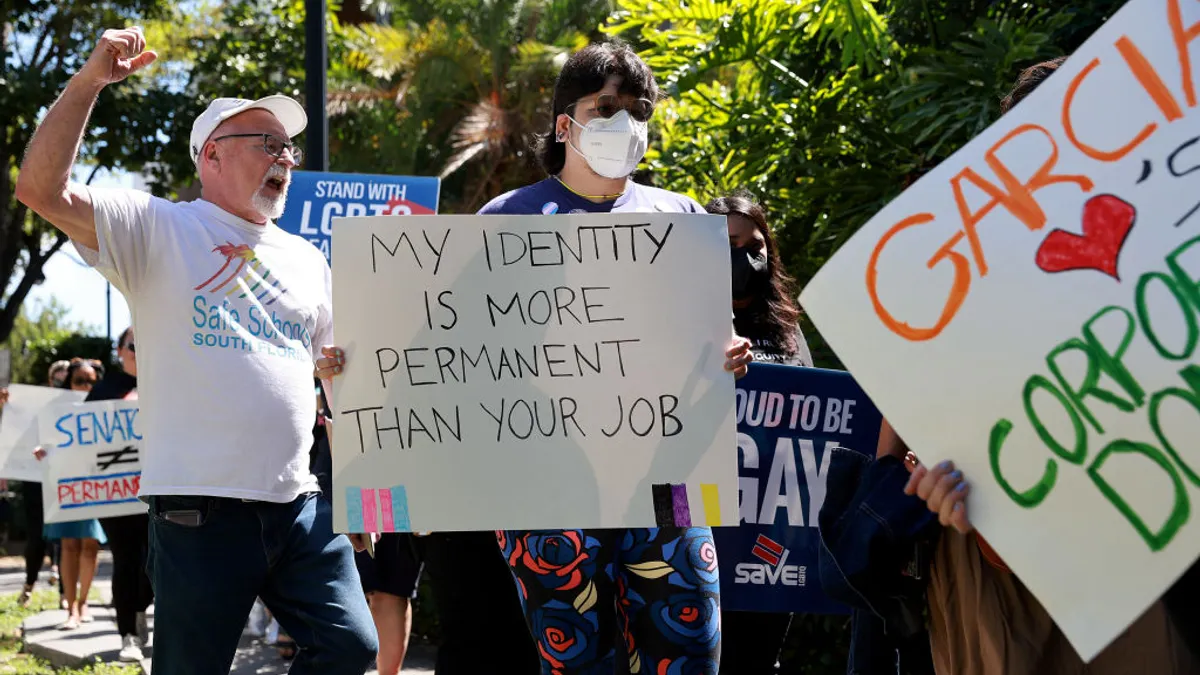WASHINGTON — A large conference room at the Society for Human Resource Management's (SHRM) Employment Law and Legislative Conference grew stuffy and crowded yesterday morning as HR professionals snagged every last table, chair or open spot of carpet to catch a session on absence and disability management.
It's perhaps no surprise the session attracted an army of HR pros — recent research revealed 60% of employers earned a grade of C, D or F at managing employee absence and disability. As attendees responded to the speaker, Ogletree Deakins Office Managing Shareholder Gregory J. Hare, with comments and questions, they put the research's findings in context: absence and disability management is tough because each employee brings forth a unique request, and some abuse the system. That's why a posse of attendees flocked around Hare after the presentation to seek his advice about the situations frustrating them at work and why others later joked that FMLA, an acronym for the Family and Medical Leave Act, really stands for the Friday and Monday Leave Act.
But before Hare addressed anyone's specific headaches, he offered his general approach to absence and disability: "When in doubt, run your business," he said. "There's no law that hamstrings an employer so much that they have to leave work undone." Employment laws — particularly the FMLA and the Americans with Disabilities Act (ADA) — grant both employees and employers protections surrounding absence and disability. The FMLA is designed to allow people not to be at work, while the ADA is designed to help people to be at work, Hare said.
Managers must understand this, he said; "Every single manager needs to know a little something about employment law 101." Why? Because managers speak on behalf of the company, he said. Fortunately, employers have at least some influence on how a manager responds to a situation. "Sometimes we can do something about what employees are doing and sometimes employees get themselves in predicaments," Hare said. "But you can absolutely do something about what your managers do."
Figuring out FMLA
As employers decide how to handle employee absences, they need to devise a plan and choose a point person. "It's very important that you have a system in place so that somebody owns this," Hare said. That way, someone — or multiple people in a large organization — will collect all FMLA-related information and know without any doubt how much FMLA leave each worker has used, why and when. This person also can take responsibility for carrying out requests for confirmation from a medical provider, Hare said, pointing out that employers need not assume that employees are telling the truth.
Employers need to offer employees clear guidelines for calling in an absence, too, Hare said. This way, organizations can hold workers to a standard. "When we're implementing and enforcing the FMLA, we've got some protections," Hare said. "It's not come and go as you please." But employers shouldn't complicate their procedures and processes so much that they sacrifice simplicity. "We've gotten so rule oriented that we've made it way more complicated than saying 'why aren't you here?'" Hare said.
Sometimes employees offer untrue explanations for their absences and managers can call their bluffs immediately. If that's the case, push back and ask the employee to "do better," Hare said. This situation arises more frequently in the age of social media, Hare said. An employee may have requested and taken FMLA leave for chronic back pain, for example, but her Facebook or Instagram account shows she's actually on vacation somewhere tropical. FMLA leave and vacations aren't mutually exclusive, but managers can ask the employee about it. This holds true when an employer suspects an employee's certification is invalid. In that case, the employer has the right to ask the employee to get a second opinion from another medical provider, Hare said. It's rare that employers need to do that, however, he noted.
If an employee has exhausted the 12 weeks of unpaid leave the FMLA provides and can't return to work, an employer should send her a letter notifying her that she's used up all her FMLA leave, Hare recommended. Experts also say employers may want to ask the employee if there's anything that could enable her to return to work, thereby starting the ADA's interactive process.
If the employee fails to respond, the employer can send another letter, notifying the employee that if she doesn't communicate, it will have to "discuss next steps." Employers should require the letters be signed upon delivery so employees who are terminated can't claim they never received a letter, Hare recommended.
Assessing the ADA
- Reinstate and accommodate: At this point, Hare said, an employer should ask itself: is this function — the one that's conflicting with an employee's disability and preventing him or her from doing a job — really essential? If the answer is no, a feasible and reasonable job modification may allow an employee to return to work. Employers sometimes fail to accommodate an employee who needs a simple accommodation. That's because whoever receives the accommodation request makes the common mistake of failing to acknowledge and listen to an employee who has a disability, Hare said. If a manager shuts down an employee immediately, the worker will get angry. And then, when they make another request, they get shut down again. And then they go to the U.S. Equal Employment Opportunity Commission (EEOC), Hare said. An employer can avoid all this by training managers to hear employees out when they report they're having a problem.
- Extend leave: Once an employee has exhausted her FMLA allotment because of a disability and the parties have decided there's no possible accommodation, it's important for the employer to consider whether it can offer additional leave. Importantly, an employee with a disability is entitled to return to her same position unless the employer demonstrates that holding open the position would impose an undue hardship, according to EEOC. And if an employer cannot hold a position open, EEOC takes the position that it must consider whether it has an another position for the employee. It's also important to note whether state laws or union agreements require other action, Hare said





















